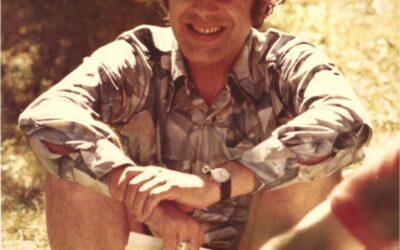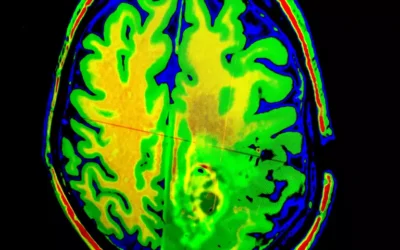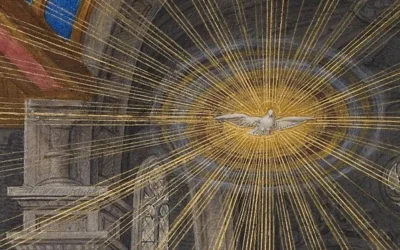What Philosophers, Mystics and Anthropologists are Similar to Carl Jung?

Read More on Jung here:
Carl Jung’s Major Influences
Jungian Analysis
Archetypes
Jung’s Method
Jungian Thought
There is an overview of Carl Jung’s life and work here as well as a list of the philosophy and anthropology that made up his major influences here. This article is neither a biography or list of influences. Instead it is a list of philosophy that is similar to Jung but not directly inspired by him or used by him as influences in his thought. These are Jungian adjacent philosophy and thought that hhas implications for the practice and further development of depth psychology.
1. Carl Jung
Carl Gustav Jung, the pioneering Swiss psychiatrist sought to fuse philosophy, psychotherapy, and anthropology together to create a lens to understand the human religious experience. . His groundbreaking concepts, such as the collective unconscious, archetypes, and individuation, have not only shaped the field of depth psychology but have also had a profound impact on various other disciplines, including philosophy. This essay explores the resonance and implications of Jung’s ideas in the works of a diverse array of philosophers who, although not directly connected to Jung, have developed theories that share intriguing parallels and intersections with Jungian thought.
2 Phenomenology and Hermeneutics
The German philosopher Martin Heidegger’s concept of Dasein, or “being-in-the-world,” bears a striking resemblance to Jung’s idea of the Self. Both concepts emphasize the individual’s inherent connectedness to the world and the importance of authentic existence. Furthermore, Heidegger’s notion of the “uncanniness” of existence, which involves confronting one’s own mortality and finitude, echoes Jung’s concept of the shadow and the necessity of integrating the darker aspects of the psyche.
French phenomenologist Maurice Merleau-Ponty’s emphasis on the “lived body” and the embodied nature of human experience resonates with Jung’s understanding of the psyche as deeply rooted in the physical realm. Merleau-Ponty’s concept of the “flesh,” which refers to the intertwining of the perceiver and the perceived, mirrors Jung’s notion of the interconnectedness of the individual and the collective unconscious.
2.3 Paul Ricoeur
Paul Ricoeur, a French philosopher known for his work in hermeneutics, shares Jung’s interest in the interpretation of symbols and narratives. Ricoeur’s theory of narrative identity, which posits that individuals construct their sense of self through the stories they tell about their lives, aligns with Jung’s emphasis on the importance of personal myth-making in the individuation process.
German philosopher Hans-Georg Gadamer’s hermeneutical approach, which stresses the importance of historical and cultural context in the interpretation of texts, parallels Jung’s recognition of the influence of collective and historical factors on the individual psyche. Gadamer’s concept of the “fusion of horizons,” which describes the process of understanding as a dialogical encounter between the interpreter and the text, echoes Jung’s approach to dream interpretation as a dialogue between the conscious and unconscious mind.
3 Philosophy of Symbolic Forms
Ernst Cassirer, a German philosopher and cultural theorist, developed a philosophy of symbolic forms that bears a striking resemblance to Jung’s theory of archetypes. Cassirer argued that human experience is mediated by symbolic structures, such as language, myth, and art, which shape our understanding of reality. This idea parallels Jung’s concept of archetypes as universal patterns of meaning that structure human experience.
Romanian historian of religion Mircea Eliade’s work on the nature of sacred time and space, as well as his comparative approach to the study of myths and religious symbols, shares much in common with Jung’s exploration of the collective unconscious and the archetypal dimensions of human experience. Eliade’s concept of the “eternal return,” which refers to the cyclical nature of mythic time, resonates with Jung’s understanding of the recurring patterns of the psyche.
However, it is important to note that Jung’s collaborator, Marie-Louise von Franz, criticized Eliade for reducing all myths to the motif of the world tree. Von Franz argued that this reductionist approach overlooked the rich diversity and complexity of mythological symbolism, which Jung’s more nuanced and context-sensitive approach sought to preserve.
American mythologist Joseph Campbell’s theory of the “monomyth,” or the hero’s journey, draws heavily on Jungian concepts. Campbell’s understanding of myths as symbolic expressions of universal human experiences and psychological processes aligns closely with Jung’s approach to the interpretation of mythic and religious symbols.
4 Imagination and the Poetic
French philosopher Gaston Bachelard’s exploration of the poetic imagination and his concept of “material reveries” share much in common with Jung’s emphasis on the transformative power of the imagination. Bachelard’s understanding of the imagination as a fundamental mode of human experience that structures our relationship to the world echoes Jung’s view of the imagination as a key aspect of the individuation process.
Gilbert Durand, a French anthropologist and philosopher, developed a theory of the imaginary that draws heavily on Jungian concepts. Durand’s classification of symbolic structures into diurnal and nocturnal regimes parallels Jung’s distinction between the conscious and unconscious mind. Furthermore, Durand’s concept of the “anthropological trajectory,” which describes the development of symbolic structures over time, shares similarities with Jung’s understanding of the evolution of the psyche.
American psychologist James Hillman, a leading figure in the post-Jungian movement of archetypal psychology, built upon and expanded Jung’s ideas about the creative imagination. Hillman’s emphasis on the “poetic basis of mind” and his understanding of psychological experience as inherently metaphorical and imaginative align closely with Jung’s approach to the interpretation of dreams and symbols.
5 Post-Structuralism and Critical Theory
French philosopher Gilles Deleuze’s concept of the “rhizome,” which emphasizes the interconnectedness and multiplicity of phenomena, shares similarities with Jung’s understanding of the psyche as a complex network of relationships between various elements. Furthermore, Deleuze’s notion of “becoming” and his emphasis on the transformative power of desire resonate with Jung’s concept of individuation as a process of continuous growth and self-realization.
Michel Foucault, a French philosopher and historian, shares with Jung a critical approach to the understanding of the self and the role of power in shaping human experience. Foucault’s concept of the “care of the self,” which involves the cultivation of self-knowledge and the transformation of one’s mode of being, parallels Jung’s emphasis on the importance of self-reflection and personal growth in the individuation process.
French psychoanalyst Jacques Lacan’s theory of the “mirror stage,” which describes the formation of the ego through identification with an external image, shares similarities with Jung’s concept of the persona as a mask or social identity that the individual adopts. Furthermore, Lacan’s emphasis on the role of language and symbolic structures in shaping human experience aligns with Jung’s understanding of the importance of symbols and archetypes in the functioning of the psyche.
Slovenian philosopher and cultural critic Slavoj Žižek’s application of Lacanian psychoanalysis to the critique of ideology and popular culture shares some common ground with Jung’s approach to the analysis of cultural symbols and collective psychological phenomena. Žižek’s concept of the “sublime object of ideology,” which refers to the unconscious fantasies that structure social reality, echoes Jung’s understanding of the role of archetypal images in shaping collective experience.
6 Integral Philosophy and Spirituality
Swiss philosopher and poet Jean Gebser’s theory of the evolution of human consciousness shares some similarities with Jung’s understanding of the development of the psyche. Gebser’s concept of the “integral structure” of consciousness, which involves the synthesis of previous stages of development, parallels Jung’s notion of the Self as a unifying principle that integrates the various aspects of the psyche.
American philosopher Ken Wilber’s integral theory, which seeks to synthesize insights from various fields of knowledge, including psychology, philosophy, and spirituality, draws heavily on Jungian concepts. Wilber’s understanding of the evolution of consciousness and his emphasis on the integration of the individual and collective dimensions of experience align closely with Jung’s approach to the study of the psyche.
German psychologist and philosopher Erich Neumann, a close collaborator of Jung, further developed and expanded upon many of Jung’s key ideas. Neumann’s theory of the “origins and history of consciousness,” which traces the evolution of the psyche from primitive to modern times, builds upon Jung’s understanding of the collective unconscious and the archetypal dimensions of human experience.
7 Embodiment and Spatiality
German philosopher Peter Sloterdijk’s concept of “spheres,” which describes the various spatial and social contexts in which human experience unfolds, shares some similarities with Jung’s understanding of the psyche as embedded in a network of cultural and historical factors. Sloterdijk’s emphasis on the importance of “immunological” structures, which protect individuals and societies from external threats, echoes Jung’s concept of the persona as a protective mask that mediates between the individual and the social world.
8 Post-Jungian Developments
German psychologist and philosopher Wolfgang Giegerich, a prominent figure in the post-Jungian movement, has developed a critique of Jung’s emphasis on the image and the archetype. Giegerich argues for a more abstract and logical understanding of the psyche, emphasizing the importance of language and dialectical thinking in the process of psychological transformation. While challenging some of Jung’s core assumptions, Giegerich’s work represents an important extension and re-visioning of Jungian thought.
9 Imagination and Islamic Thought
French philosopher and Islamicist Henry Corbin’s concept of the mundus imaginalis, or the imaginal world, shares much in common with Jung’s understanding of the creative imagination. Corbin’s exploration of Islamic mysticism and his emphasis on the transformative power of the imagination align closely with Jung’s approach to the study of symbols and the individuation process.
10 Process Philosophy and Intuition
French philosopher Henri Bergson’s theory of “creative evolution” and his emphasis on the role of intuition in philosophical thought share some intriguing parallels with Jung’s understanding of the creative unconscious and the importance of non-rational modes of knowing. Bergson’s concept of “duration,” which refers to the subjective experience of time as a continuous flow, resonates with Jung’s notion of the psyche as a dynamic, ever-evolving process.
Furthermore, Bergson’s critique of the limitations of intellectual analysis and his advocacy of intuition as a means of grasping the essence of reality align with Jung’s emphasis on the importance of symbolic and imaginal thinking in the individuation process. Both thinkers sought to move beyond the confines of rational, discursive thought and to explore the deeper, more fluid dimensions of human experience.
11 Transpersonal Psychology and Spirituality
Czech psychiatrist and researcher Stanislav Grof’s work in transpersonal psychology, particularly his concept of “holotropic states” and his exploration of non-ordinary states of consciousness, shares some common ground with Jung’s understanding of the collective unconscious and the archetypal CopyRetryClaude’s response was limited as it hit the maximum length allowed at this time. Claude does not have internet access. Links provided may not be accurate or up to date.Jcontinue if there are others on the list of links that would be good to use do a section for them. Editdimensions of the psyche. Grof’s emphasis on the transformative potential of these states and their relevance for personal growth and self-realization aligns with Jung’s notion of individuation as a process of psychological and spiritual development.
American philosopher and cultural historian Richard Tarnas’ work, particularly his book “The Passion of the Western Mind,” shares some similarities with Jung’s approach to the study of the psyche and its relationship to cultural and historical factors. Tarnas’ exploration of the archetypal patterns and dynamics underlying Western intellectual history resonates with Jung’s understanding of the collective unconscious and its influence on individual and cultural experience.
12 Archetypal Psychology and Myth
American mythologist and storyteller Michael Meade’s work in the field of archetypal psychology and his emphasis on the importance of myth and storytelling in personal and cultural transformation share much in common with Jung’s approach to the study of the psyche. Meade’s concept of the “second story,” which refers to the deeper, mythic dimensions of human experience, aligns with Jung’s understanding of the role of archetypes and the collective unconscious in shaping individual and collective life.
13 Ecopsychology and the Ecological Self
American philosopher and ecologist David Abram’s work in the field of ecopsychology, particularly his concept of the “more-than-human world” and his emphasis on the reciprocal relationship between the human psyche and the natural environment, shares some intriguing parallels with Jung’s understanding of the interconnectedness of the individual and the collective unconscious. Abram’s exploration of the role of sensory experience and embodied perception in shaping our relationship to the world echoes Jung’s emphasis on the importance of the body and the physical realm in the functioning of the psyche.
14 Mysticism and Depth Psychology
German theologian and mystic Meister Eckhart’s teachings on the nature of the soul and its relationship to the divine share some striking similarities with Jung’s understanding of the Self and the process of individuation. Eckhart’s emphasis on the “ground of the soul” as the innermost core of the individual, which is identical with the divine, parallels Jung’s concept of the Self as the central archetype of wholeness and the goal of the individuation process.
Spanish mystic and Carmelite nun Teresa of Avila’s writings, particularly her masterpiece “The Interior Castle,” offer a rich exploration of the inner journey of the soul that resonates with Jung’s understanding of the individuation process. Teresa’s description of the seven mansions of the soul, each representing a stage of spiritual growth and transformation, shares some common ground with Jung’s concept of the stages of individuation and the progressive integration of the psyche.
Spanish mystic and Carmelite friar St. John of the Cross’ writings, especially his poem “The Dark Night of the Soul,” explore the profound spiritual and psychological transformation that occurs when the individual surrenders to the divine. John’s understanding of the “dark night” as a necessary stage of purification and self-emptying before union with God shares some similarities with Jung’s concept of the descent into the unconscious and the confrontation with the shadow as essential aspects of the individuation process.
15 Existentialism and the Human Condition
French philosopher Jean-Paul Sartre’s existentialist philosophy, with its emphasis on individual freedom, responsibility, and the inherent meaninglessness of existence, shares some common ground with Jung’s understanding of the human condition and the challenges of individuation. Sartre’s concept of “bad faith,” which involves the denial of one’s freedom and the adoption of pre-determined roles, resonates with Jung’s notion of the persona as a mask that can hinder authentic self-expression and growth.
16 Alchemy and the Transformation of the Psyche
Belgian alchemist and philosopher Gerhard Dorn’s writings on the alchemical process and its relationship to the transformation of the human soul had a significant influence on Jung’s understanding of the psyche and the individuation process. Dorn’s concept of the “unus mundus,” or the unity of all things, and his emphasis on the reconciliation of opposites in the alchemical work, deeply informed Jung’s approach to the study of alchemy as a symbolic language for the psychological process of individuation.
Greek alchemist and mystic Zosimos of Panopolis’ visionary writings and dream interpretations played a key role in shaping Jung’s understanding of alchemy as a symbolic language for the individuation process. Zosimos’ descriptions of the stages of the alchemical work, the importance of the “divine water” or “mercurial water” in the transformation of matter, and the symbolism of the “philosopher’s stone” as the ultimate goal of the work, all found their way into Jung’s psychological interpretation of alchemy and its relevance for the study of the human psyche.
The wide-ranging connections and resonances between Jung’s thought and the ideas of various philosophers, mystics, and scholars across different fields and traditions demonstrate the enduring significance and fertility of Jungian psychology. From phenomenology and hermeneutics to transpersonal psychology and ecopsychology, from the philosophy of symbolic forms to the study of myth and alchemy, Jung’s ideas have left an indelible mark on the intellectual and spiritual landscape of the 20th and 21st centuries.
By tracing these connections and exploring their implications, we gain a deeper appreciation of the richness and complexity of Jungian thought and its ongoing relevance for understanding the human psyche, culture, and the quest for meaning and wholeness. The legacy of Carl Jung extends far beyond the boundaries of psychology, offering a wealth of insights and inspirations for thinkers and seekers across a wide range of disciplines and traditions.
Mystics and Gurus
What is Gnosticism?
Robert Grossette
Meister Eckhart
Kabbalah
Teresa of Avila
Kabbalah and Ein Sof
St. John of the Cross
Simone Weil
Rumi
D.T. Suzuki
Lao Tzu
Pythagoras
Neoplatonism
Mani
Jan van Ruusbroec
Johannes Tauler
Angelus Silesius
Martin Buber
Hermes Trismegistus
Jakob Boehme
Emanuel Swedenborg
John Scottus Eriugena
Pseudo-Dionysius
Nicolas Cusas
Amalric of Bena
Gerhard Dorn
Zosimos
Plotinus
Roberto Asaglioli



























0 Comments